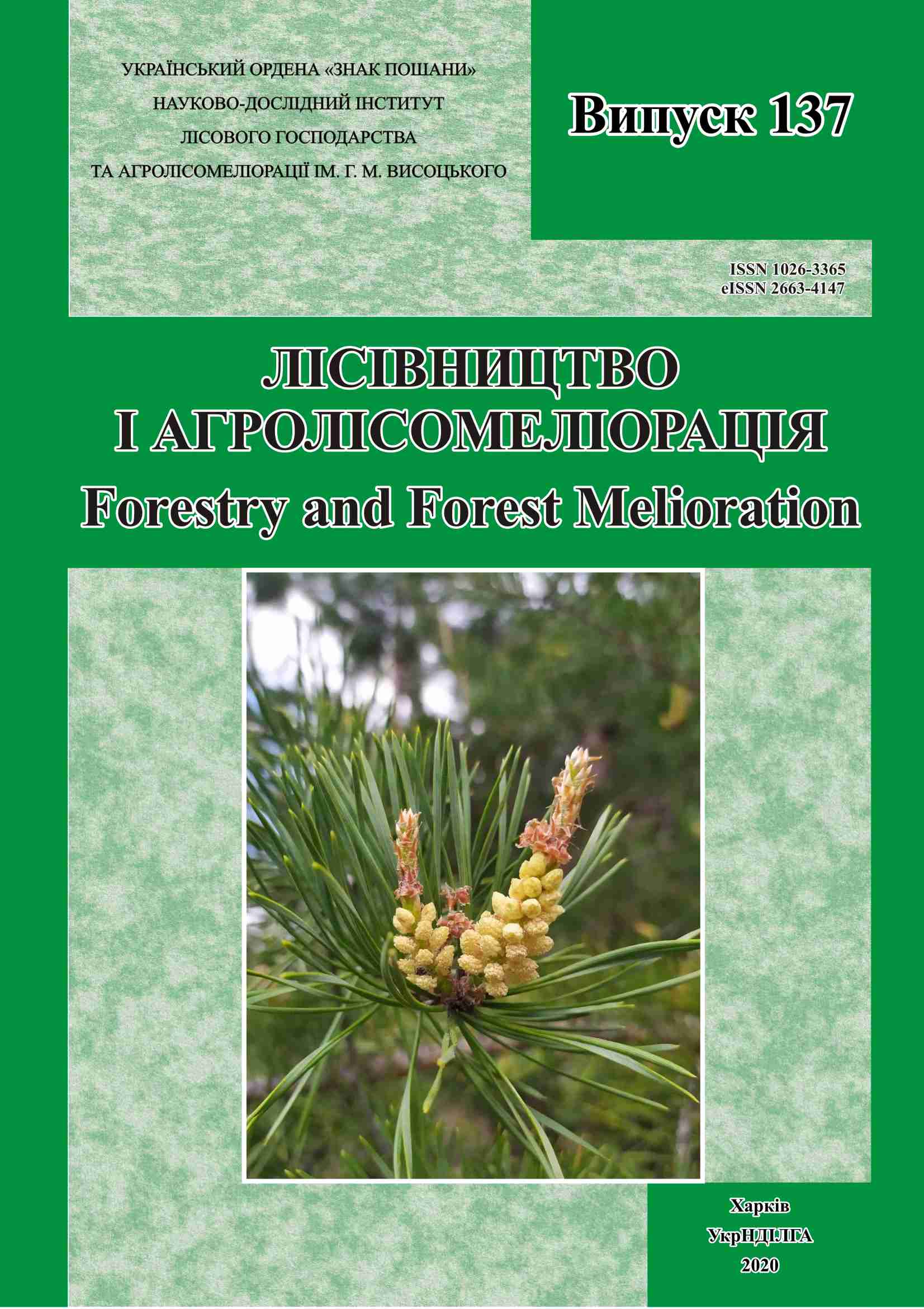Abstract
Introduction
Spruce bark beetle (Ips typographus) is one of the most dangerous species of spruce stem insects. Decline of spruce stands has been periodically happening in different regions of Ukraine: Vinnytsia, Zhytomyr, Ivano-Frankivsk, Transcarpathian, and others. The dynamics of spruce decline depends on many factors, namely prolonged summer droughts, high temperature, and growth of the bark beetle population.
The aim of our research was to identify the phase of the outbreak of spruce bark beetle in different populations.
Materials and Methods
We compared the main parameters for different populations from the spruce stands of Lviv Region and the Botanical garden of the Kharkiv State University to determine the condition of the bark beetle foci. The population density, length of the beetle galleries, the energy of reproduction, production, and survival were assessed.
Results
The population density of I. typographus, one of the important indicators was maximal – 6.3 ± 2.6 entry holes per dm2 – in samples from the Botanical Garden (BG) and minimal –
2.04 ± 0.6 entry holes per dm2 – in samples from the Grebenivske Forestry (GF).
The length of the mother galleries was maximal in samples from the GF – 6.0 ± 1.74 cm, in samples from the Zelemianske Forestry (ZF) and BG it was 4.3 cm.
The energy of reproduction varied from 0.4 ± 0.25 to 0.6 ± 0.45.
The parameter of production was the highest in the samples from the BG – 5.1 ± 2.73 specimens per dm2, the least in GF – 4.2 ± 2.57 specimens per dm2.
Survival of I. typographus was the highest in the samples from the ZF, making 11.3 %; in samples from the other points it was from 5.3 to 5.9 %.
The difference between the population parameters from the spruce trees growing in the GF, ZF, and BG was not statistically significant (p = 0.05).
We did not find a strong correlation between the length of mother galleries and the population density of bark beetle population in the samples from the spruce stands in Lviv Region.
All studied bark beetle foci are undergoing the phases of crisis, or dispersal, for various reasons. This can be explained as follows: using sanitation cuttings in spruce stands in Lviv Region or decrease in fodder base for bark beetle in the BG.
Conclusions
Population density of I. typographus was maximal in the samples from the Botanical Garden, Kharkiv Region, and minimal in the samples from the Grebenivske Forestry, Lviv Region. The length of the beetle galleries was the longest in the samples from the Grebenivske Forestry. Production was the highest in the samples from the Botanical Garden.
Survival of I. typographus was the highest in the samples from the Zelemianske Forestry, Lviv Region. The difference between the population parameters wasn’t statistically significant (p = 0.05).
We didn’t determine a strong correlation between the length of the mother galleries and the population density of I. typographus in samples from the spruce stands growing in Lviv Region.
The proportion of the exit holes of Ips typographus was significantly higher in the samples from Lviv Region and amounted to 78.3 and 62.2 %, respectively, in comparison with other groups of insects.
All studied bark beetle foci are undergoing phases of crisis or dispersal.
2 Figs., 2 Tables, 26 Refs.
Key words: stem pests, spruce, population parameters.

This work is licensed under a Creative Commons Attribution 4.0 International License.
